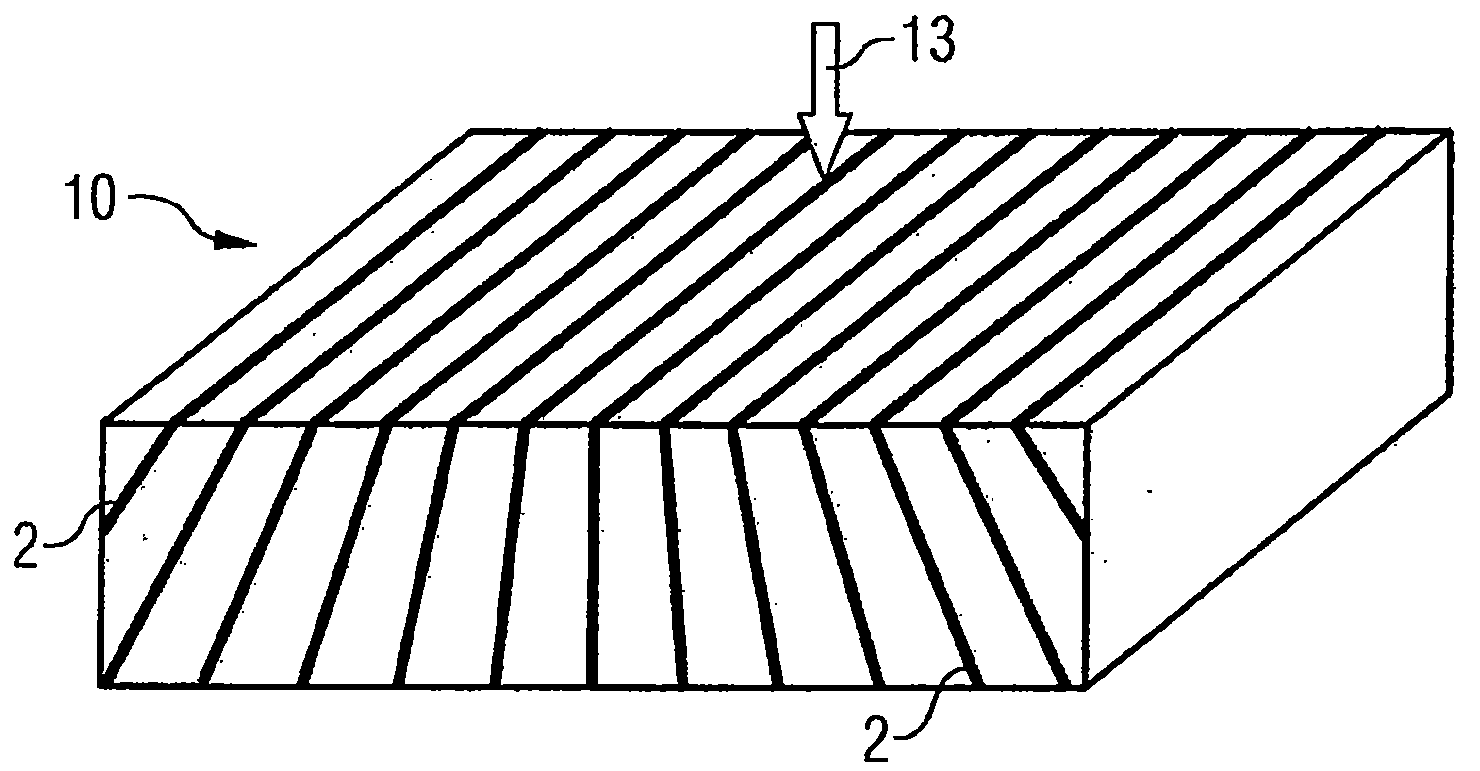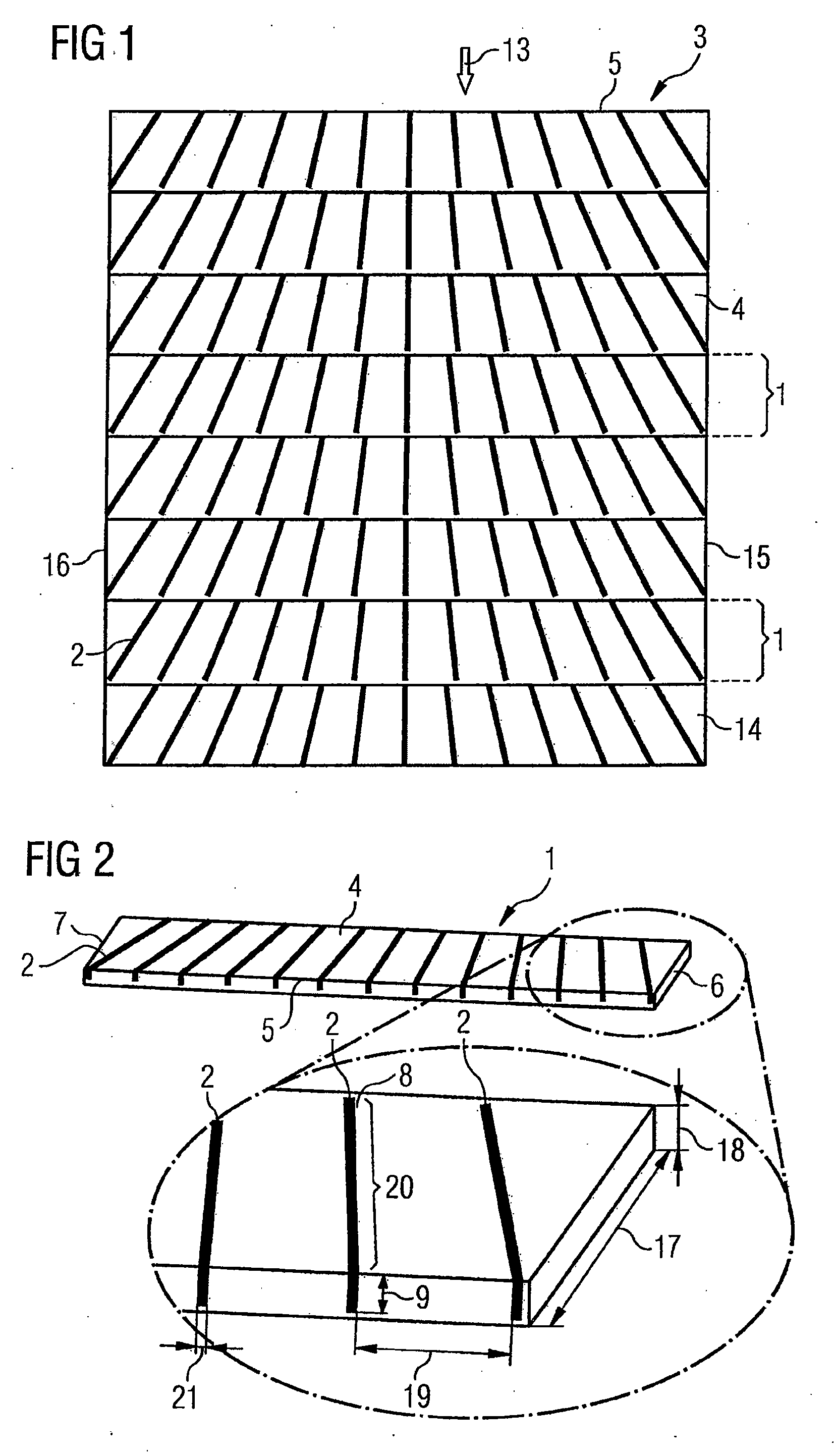Anti-scatter grid
a grid and anti-scatter technology, applied in the field of anti-scatter grids, can solve the problems of image faults, reduced ability to detect fine differences in contrast, and loss of primary radiation at the edges of recorded images, etc., and achieve the effect of low cos
- Summary
- Abstract
- Description
- Claims
- Application Information
AI Technical Summary
Benefits of technology
Problems solved by technology
Method used
Image
Examples
Embodiment Construction
[0038]FIG. 1 shows a view from above a third element 3, for example, a plastic foil. Integrated into the plastic foil 3 are regularly-repeating second elements 2, such as microstructures. A number of second elements 2 form a first element 1. The second elements 2 are arranged in the radiation direction 13 with an angle 14 to the lateral edge 15 of the plastic foil 3. The angle 14 decreases continuously towards the middle of the plastic foil 3 or towards the middle of the first element 1 and then increases back to the second edge 16 again. A focus effect of an anti-scatter grid 10 formed therefrom in the direction of radiation 13, perpendicular to the width 5 of the third element 3, can be achieved.
[0039]The plastic foil 3 has, for example, a width of 400 mm and a thickness of between 0.1 and 0.5 mm
[0040]FIG. 2 shows a part of the third element 3 of one of the first elements 1, and a detailed view thereof. Located in the first element 1 are pits 8, in which the second elements 2 abso...
PUM
 Login to View More
Login to View More Abstract
Description
Claims
Application Information
 Login to View More
Login to View More - R&D
- Intellectual Property
- Life Sciences
- Materials
- Tech Scout
- Unparalleled Data Quality
- Higher Quality Content
- 60% Fewer Hallucinations
Browse by: Latest US Patents, China's latest patents, Technical Efficacy Thesaurus, Application Domain, Technology Topic, Popular Technical Reports.
© 2025 PatSnap. All rights reserved.Legal|Privacy policy|Modern Slavery Act Transparency Statement|Sitemap|About US| Contact US: help@patsnap.com



